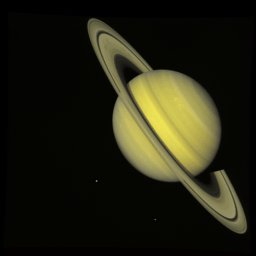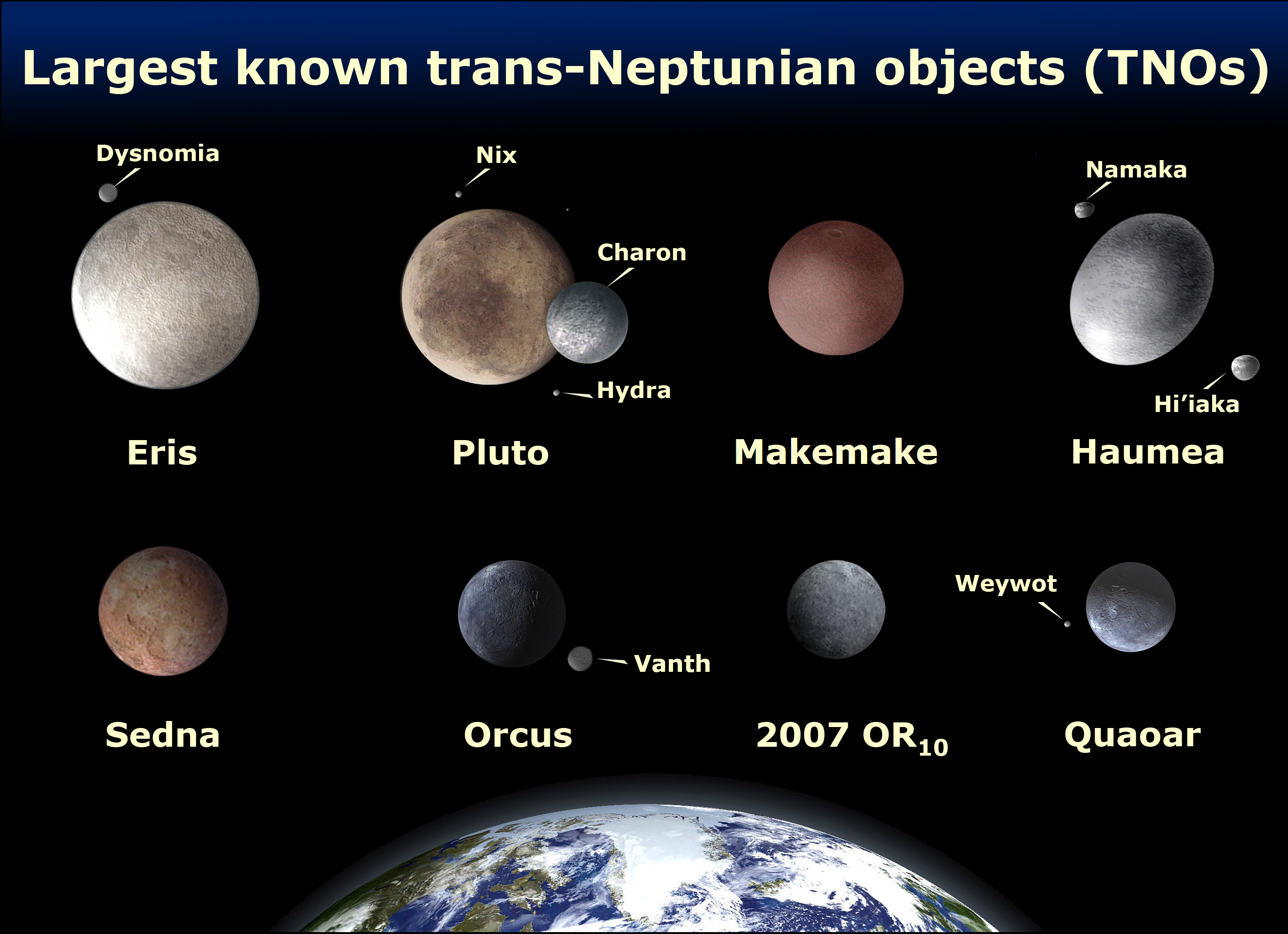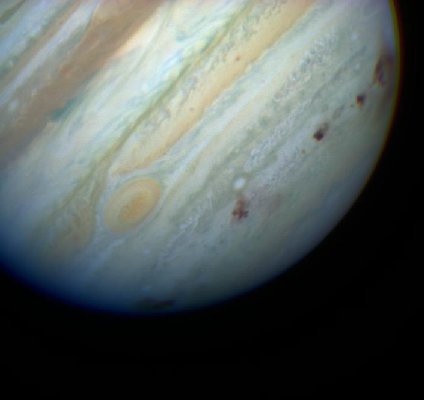Observations and the Solar System : Lecture 8
Saturn
The next planet we meet coming from the sun is Saturn. Saturn has many
similarities to Jupiter. It is also a gas giant (but "only" 95 times as
heavy as the earth). It does have very spectacular Rings These
can be seen
with a small telescope and are an extremely attractive feature. There are
composed of rocks orbiting Saturn together in the rings. On close
inspection they have divisions and much structure.
Features include,
- 10 hrs 13mins rotation period
- cloudtop temperatures of -180 C
- Less dense atmoshpere than Jupiter
- One major satelite -Titan
|

|
Titan was the target for the Huygens probe on
the
Cassini Mission
. It is the only moon in the solar system with a
atmosphere. It is thought that it in many ways ressembles a prototype
earth but one
caught in "deep-freeze"
We discussed the Cassini Mission as an example of Solar System Exploration
and in particular the role of the Huygens probe which is ESA (European
Space Agency) contribution and which
will land on Titan.
Titan was a major target of the Voyager missions but the, surprising,
dense
atmoshpere prohibited pictures of the moon's surface. Vayoager data
suggest Titan's has
- A surface pressure of 1.6 At - more than earths!
- Atmospheric composition of 90 percent Nitrogen , 10 Percent Methane
- Surface Temperature of -178 C
Much speculation surrounds surface conditions, possible there will be a
methane/ethane "sea".
Cassini nicely illustrates the complex flight path these missions
take and we discussed the controversy surrounding its earth flyby.
Some images of Saturn are,
- image of storm on Saturn
- image taken by voyager (with 2 small moons visable
- image showing moons Tethys and Dione (inc shadow).
- HST image of Saturn showing thinness of rings
- HST image of Saturn (false colour)
- Composite HST images of Saturn
- Voyager image of Saturn looking back as it moved onwards
- image of rings (false colour)
- image of rings (false colour). Differing colors indicate differing chemical,composition
- image of moon Titan - note the thick hazy atmosphere
- image of moon Dione - with impact craters
- image of moon Mimas - with an 100km wide
impact crater which must almost have destroyed it
- image of moon Enclades: moon with subsurface water
(see here and here )
Associated with the Cassini mission we have
Uranus and Neptune
These two gas planets are "mediun sized". Since they are far from the
sun they are rather cold.
Uranus is fairly featurless - is weirdly is rotating almost on its
side. Its axis is 98 degrees to the vertical! This may be the result of
a collision at some time.
Neptune has large jupiter-like cloud formations incluing
a great spot.
Neptune has a large moon - Triton.
Both have ring structures and many small moons
Some images of Uranus and Neptune are,
Dwarf Planets
The Solar system contains, at present, five objects designated to be dwarf planets . It is expected that more
will be found with time
Pluto and Charon
Pluto has only just been visited this year by the Horizons probe and is curently sending data back to Earth.
It is unusual in several
aspects. Firstly it is NOT a gas planets but is small and probably
composed of
rock/ice. Its orbit is also peculular. It has rather an eceentric orbit
sometimes it is closer to the sun than Neptune. Its distance from the
sun varies from between 30 and 50 A.U. Its orbit's plane is also
significantly different from the other planets.
Pluto has a moon Charon which is almost as big as Pluto itself (
its diameter is about half)
It is thought that Pluto is just one (perhaps the largest)
of many small rocky worlds existing
in the outer reaches of the solar system in the ``Kuiper belt''.
It is thought that Triton
could be one of these objects "captured" by Neptune.
The images of Pluto and charon include a few HST images
-
and some images from the Gemini telescope
Ceres
Ceres lies in the asteroid belt
Eris (formally designated Xena)
Orbit of Eris
It is expected that mny more objects will be discoved in coming decade.
Details of the five accepted dwarf planets is to be found on the
planet data sheet
The following figure compares these objects (excluding ceres)
together with potential still to be acknowledge dwarf planets








